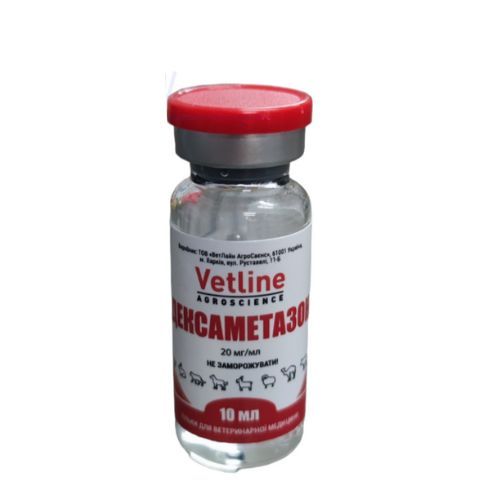|
Quantity
|
Out of stock
|
||
|
|
|||
🐕 DEXAMETHASONE 2 mg 🐈
🚑 Treatment of newborns who choke during labor.
Treatment of cats and dogs:
post-traumatic edema, arthritis, bursitis, tendinitis, tendovaginitis, allergic dermatitis, acetonemia, mastitis, anemia, eczema. Dexamethasone can be used as maintenance therapy when an immediate therapeutic effect is required. It is prescribed to dogs and cats as an anti-inflammatory, antiallergic, anti-edematous and gluconeogenic agent.
🟢 DOSAGE:
Intramuscularly, intravenously or subcutaneously:
- for dogs, cats - 0.25-0.5 ml per 5 kg (0.1-0.2 mg of dexamethasone per 1 kg of body weight). If necessary, the injection is repeated after 2 days.
Contraindication:
Do not prescribe to pregnant animals, as well as animals with diabetes, chronic nephritis, heart failure or osteoporosis. Do not use in case of viral infections in the viral phase.
⚠ Cannot be used together with other glucocorticosteroids, immunobiological drugs, barbiturates, antihistamines and antidiabetics, potassium-excreting diuretics, salicylates, calcium salts, tetracyclines, macrolides, kanamycin.
COMPOSITION OF THE MEDICINE:
1 ml of the drug contains the active substance: dexamethasone (dexamethasone disodium phosphate) - 2 mg.
🍀 Pharmacological properties:
Dexamethasone 2 mg / cm³ belongs to the group of synthetic glucocorticosteroids.
It has a pronounced anti-inflammatory, antiallergic, desensitizing and immunosuppressive effect.
The mechanism of action of the hormone is to block the release of inflammatory mediators by eosinophils, including prostaglandins, which intensify the inflammatory process, stimulate the biosynthesis of lipocartins, which have an anti-edematous effect, reduce the number of mast cells that produce hyaluronic acid and reduce penetration. The immunosuppressive effect is due to the inhibition of the release of cytokines (interleukin 1,2, interferon gamma) from lymphocytes and macrophages, inhibition of the proliferation of lymphatic tissue and cellular immunity, and disruption of T-lymphocyte kinetics.
The main effect of dexamethasone on metabolism is associated with protein catabolism, increased gluconeogenesis in the liver, and reduced glucose utilization by peripheral tissues.
The maximum concentration after parenteral administration of dexamethasone in plasma is detected after 60 minutes. Therapeutic concentration in serum is maintained for up to 48 hours, depending on the type of animal. The bioavailability of dexamethasone when administered intramuscularly is 100%, its biotransformation occurs in the liver and partially in fibroblasts involved in the metabolic process. Dexamethasone is excreted in the form of metabolites, mainly in urine and bile.
Storage conditions:
The drug is stored in the manufacturer's closed packaging, separately from food and feed, in a dry place protected from direct sunlight at a temperature of 4 ° C to 25 ° C in places inaccessible to children.
The shelf life of the drug, provided that the storage conditions are observed, is 3 years from the date of production, after opening the bottle - no more than 21 days.
































